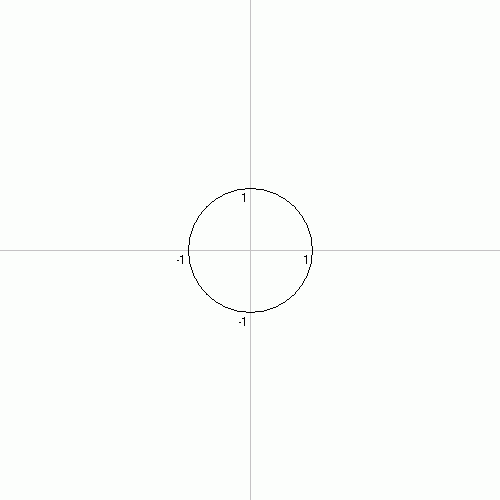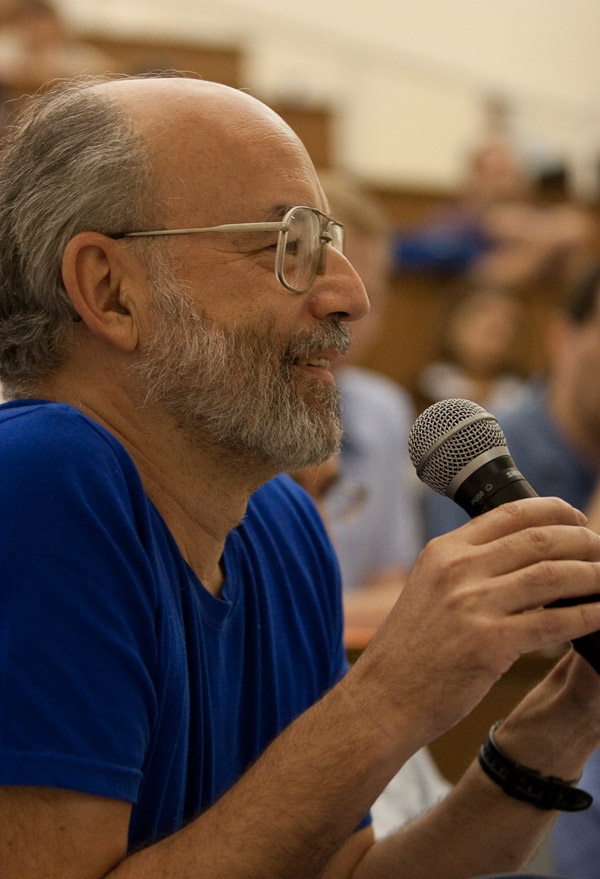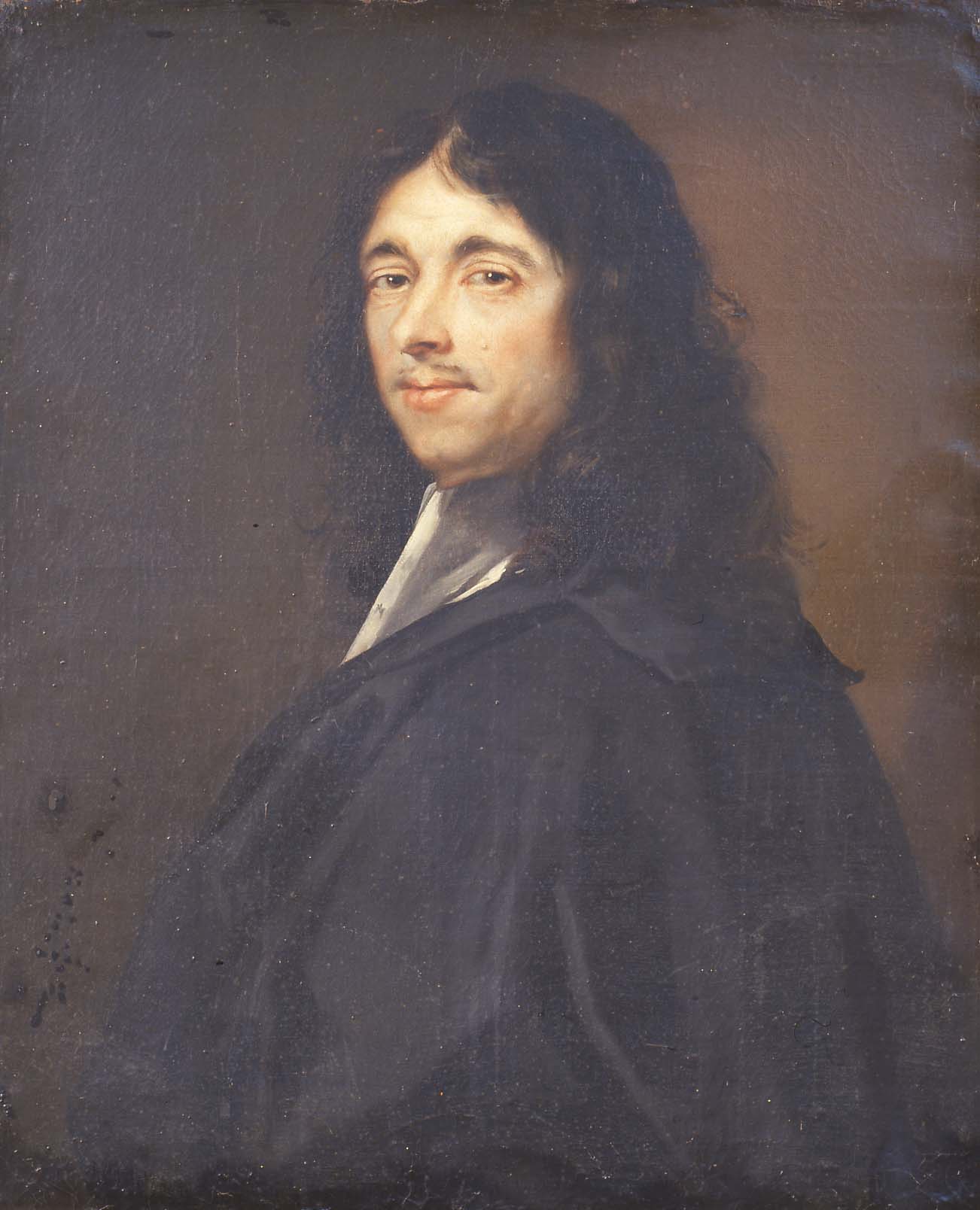|
65,537
65537 is the integer after 65536 and before 65538. In mathematics 65537 is the largest known prime number of the form 2^ +1 (n = 4), and is most likely the last one. Therefore, a regular polygon with 65537 sides is constructible with compass and unmarked straightedge. Johann Gustav Hermes gave the first explicit construction of this polygon. In number theory, primes of this form are known as Fermat primes, named after the mathematician Pierre de Fermat. The only known prime Fermat numbers are 2^ + 1 = 2^ + 1 = 3, 2^ + 1= 2^ +1 = 5, 2^ + 1 = 2^ +1 = 17, 2^ + 1= 2^ + 1= 257, 2^ + 1 = 2^ + 1 = 65537. In 1732, Leonhard Euler found that the next Fermat number is composite: 2^ + 1 = 2^ + 1 = 4294967297 = 641 \times 6700417 In 1880, showed that 2^ + 1 = 2^ + 1 = 274177 \times 67280421310721 65537 is also the 17th Jacobsthal–Lucas number, and currently the largest known integer ''n'' for which the number 10^ + 27 is a probable prime. Applications 65537 is commonly used ... [...More Info...] [...Related Items...] OR: [Wikipedia] [Google] [Baidu] |
65537-gon
In geometry, a 65537-gon is a polygon with 65,537 (216 + 1) sides. The sum of the interior angles of any non– self-intersecting is 11796300°. Regular 65537-gon The area of a ''regular '' is (with ) :A = \frac t^2 \cot \frac A whole regular is not visually discernible from a circle, and its perimeter differs from that of the circumscribed circle by about 15 parts per billion. Construction The regular 65537-gon (one with all sides equal and all angles equal) is of interest for being a constructible polygon: that is, it can be constructed using a compass and an unmarked straightedge. This is because 65,537 is a Fermat prime, being of the form 22''n'' + 1 (in this case ''n'' = 4). Thus, the values \cos \frac and \cos \frac are 32768- degree algebraic numbers, and like any constructible numbers, they can be written in terms of square roots and no higher-order roots. Although it was known to Carl Friedrich Gauss by 1801 that the regular 65537-gon was cons ... [...More Info...] [...Related Items...] OR: [Wikipedia] [Google] [Baidu] |
Johann Gustav Hermes
Johann Gustav Hermes (20 June 1846 – 8 June 1912) was a German mathematician. Hermes is known for constructing a polygon with 65,537 sides. Early life On 20 June 1846, Hermes was born in Königsberg, a former German city (presently Kaliningrad, Russia). Hermes was educated at the Kneiphöfischen Gymnasium. He undertook his ''Abitur'' (final examination) at the school in 1866. After completing his secondary education, he studied mathematics from 1866 to 1870, mostly in Königsberg. His studies were interrupted due to his participation in the Franco-Prussian War between 1870 and 1871. Education On 14 December 1872, Hermes completed his studies and earned a degree in mathematics. On 5 April 1879, Hermes received a doctorate degree and his dissertation was on the "Reduction of the problem of cyclotomy on linear equations (for prime numbers of the form 2''m''+1)" (German: "''Zurückführung des Problems der Kreistheilung auf lineare Gleichungen (für Primzahlen von der Form ... [...More Info...] [...Related Items...] OR: [Wikipedia] [Google] [Baidu] |
Fermat Number
In mathematics, a Fermat number, named after Pierre de Fermat (1601–1665), the first known to have studied them, is a natural number, positive integer of the form:F_ = 2^ + 1, where ''n'' is a non-negative integer. The first few Fermat numbers are: 3 (number), 3, 5 (number), 5, 17 (number), 17, 257 (number), 257, 65537 (number), 65537, 4294967297, 18446744073709551617, 340282366920938463463374607431768211457, ... . If 2''k'' + 1 is Prime number, prime and , then ''k'' itself must be a power of 2, so is a Fermat number; such primes are called Fermat primes. , the only known Fermat primes are , , , , and . Basic properties The Fermat numbers satisfy the following recurrence relations: : F_ = (F_-1)^+1 : F_ = F_ \cdots F_ + 2 for ''n'' ≥ 1, : F_ = F_ + 2^F_ \cdots F_ : F_ = F_^2 - 2(F_-1)^2 for . Each of these relations can be proved by mathematical induction. From the second equation, we can deduce Goldbach's theorem (named after Christian Goldbach): no two Fermat numbe ... [...More Info...] [...Related Items...] OR: [Wikipedia] [Google] [Baidu] |
RSA (algorithm)
The RSA (Rivest–Shamir–Adleman) cryptosystem is a public-key cryptosystem, one of the oldest widely used for secure data transmission. The initialism "RSA" comes from the surnames of Ron Rivest, Adi Shamir and Leonard Adleman, who publicly described the algorithm in 1977. An equivalent system was developed secretly in 1973 at Government Communications Headquarters (GCHQ), the British signals intelligence agency, by the English mathematician Clifford Cocks. That system was declassified in 1997. In a public-key cryptosystem, the encryption key is public and distinct from the decryption key, which is kept secret (private). An RSA user creates and publishes a public key based on two large prime numbers, along with an auxiliary value. The prime numbers are kept secret. Messages can be encrypted by anyone via the public key, but can only be decrypted by someone who knows the private key. The security of RSA relies on the practical difficulty of factoring the product of two ... [...More Info...] [...Related Items...] OR: [Wikipedia] [Google] [Baidu] |
Lehmer Random Number Generator
The Lehmer random number generator (named after D. H. Lehmer), sometimes also referred to as the Park–Miller random number generator (after Stephen K. Park and Keith W. Miller), is a type of linear congruential generator (LCG) that operates in multiplicative group of integers modulo n. The general formula is : X_ = a \cdot X_k \bmod m, where the modulus ''m'' is a prime number or a power of a prime number, the multiplier ''a'' is an element of high multiplicative order modulo ''m'' (e.g., a primitive root modulo ''n''), and the seed ''X'' is coprime to ''m''. Other names are multiplicative linear congruential generator (MLCG) and multiplicative congruential generator (MCG). Parameters in common use In 1988, Park and Miller suggested a Lehmer RNG with particular parameters ''m'' = 2 − 1 = 2,147,483,647 (a Mersenne prime ''M'') and ''a'' = 7 = 16,807 (a primitive root modulo ''M''), now known as MINSTD. Although MINSTD was later criticized by Marsaglia and Sullivan ... [...More Info...] [...Related Items...] OR: [Wikipedia] [Google] [Baidu] |
Regular 65537-gon First Carlyle Circle
Regular may refer to: Arts, entertainment, and media Music * "Regular" (Badfinger song) * Regular tunings of stringed instruments, tunings with equal intervals between the paired notes of successive open strings Other uses * Regular character, a main character who appears more frequently and/or prominently than a recurring character * Regular division of the plane, a series of drawings by the Dutch artist M. C. Escher which began in 1936 Language * Regular inflection, the formation of derived forms such as plurals in ways that are typical for the language ** Regular verb * Regular script, the newest of the Chinese script styles Mathematics Algebra and number theory * Regular category, a kind of category that has similarities to both Abelian categories and to the category of sets * Regular chains in computer algebra * Regular element (other), certain kinds of elements of an algebraic structure * Regular extension of fields * Regular ideal (multiple definitions) ... [...More Info...] [...Related Items...] OR: [Wikipedia] [Google] [Baidu] |
65536 (number)
65536 is the natural number following 65535 and preceding 65537. 65536 is a power of two: 2^ (2 to the 16th power). 65536 is the smallest number with exactly 17 divisors (but there are smaller numbers with more than 17 divisors; e.g., 180 has 18 divisors) . In mathematics 65536 is 2^, so in tetration notation 65536 is 42. When expressed using Knuth's up-arrow notation, 65536 is 2 \uparrow 16 , which is equal to 2 \uparrow 2 \uparrow 2 \uparrow 2 , which is equivalent to 2 \uparrow\uparrow 4 or 2 \uparrow\uparrow\uparrow 3 . As ^2 is also equal to 4, or 2 \uparrow \uparrow 2 = 4, ^2 can thus be written as ^2, or 2 \uparrow \uparrow (2 \uparrow \uparrow 2) , or as the pentation 2 (hyperoperation notation). 65536 is a superperfect number – a number such that σ(σ(''n'')) = 2''n''. A 16-bit number can distinguish 65536 different possibilities. For example, unsigned binary notation exhausts all possible 16-bit codes in uniquely identifying the n ... [...More Info...] [...Related Items...] OR: [Wikipedia] [Google] [Baidu] |
Regular Polygon
In Euclidean geometry, a regular polygon is a polygon that is Equiangular polygon, direct equiangular (all angles are equal in measure) and Equilateral polygon, equilateral (all sides have the same length). Regular polygons may be either ''convex polygon, convex'' or ''star polygon, star''. In the limit (mathematics), limit, a sequence of regular polygons with an increasing number of sides approximates a circle, if the perimeter or area is fixed, or a regular apeirogon (effectively a Line (geometry), straight line), if the edge length is fixed. General properties These properties apply to all regular polygons, whether convex or star polygon, star: *A regular ''n''-sided polygon has rotational symmetry of order ''n''. *All vertices of a regular polygon lie on a common circle (the circumscribed circle); i.e., they are concyclic points. That is, a regular polygon is a cyclic polygon. *Together with the property of equal-length sides, this implies that every regular polygon also h ... [...More Info...] [...Related Items...] OR: [Wikipedia] [Google] [Baidu] |
Constructible Polygon
In mathematics, a constructible polygon is a regular polygon that can be Compass and straightedge constructions, constructed with compass and straightedge. For example, a regular pentagon is constructible with compass and straightedge while a regular heptagon is not. There are infinitely many constructible polygons, but only 31 with an odd number of sides are known. Conditions for constructibility Some regular polygons are easy to construct with compass and straightedge; others are not. The Greek mathematics, ancient Greek mathematicians knew how to construct a regular polygon with 3, 4, or 5 sides, and they knew how to construct a regular polygon with double the number of sides of a given regular polygon.Bold, Benjamin. ''Famous Problems of Geometry and How to Solve Them'', Dover Publications, 1982 (orig. 1969). This led to the question being posed: is it possible to construct ''all'' regular polygons with compass and straightedge? If not, which ''n''-gons (that is, polygons wit ... [...More Info...] [...Related Items...] OR: [Wikipedia] [Google] [Baidu] |
Pierre De Fermat
Pierre de Fermat (; ; 17 August 1601 – 12 January 1665) was a French mathematician who is given credit for early developments that led to infinitesimal calculus, including his technique of adequality. In particular, he is recognized for his discovery of an original method of finding the greatest and the smallest ordinates of curved lines, which is analogous to that of differential calculus, then unknown, and his research into number theory. He made notable contributions to analytic geometry, probability, and optics. He is best known for his Fermat's principle for light propagation and his Fermat's Last Theorem in number theory, which he described in a note at the margin of a copy of Diophantus' ''Arithmetica''. He was also a lawyer at the ''parlement'' of Toulouse, France. Biography Fermat was born in 1601 in Beaumont-de-Lomagne, France—the late 15th-century mansion where Fermat was born is now a museum. He was from Gascony, where his father, Dominique Fermat, was a wealthy ... [...More Info...] [...Related Items...] OR: [Wikipedia] [Google] [Baidu] |
Leonhard Euler
Leonhard Euler ( ; ; ; 15 April 170718 September 1783) was a Swiss polymath who was active as a mathematician, physicist, astronomer, logician, geographer, and engineer. He founded the studies of graph theory and topology and made influential discoveries in many other branches of mathematics, such as analytic number theory, complex analysis, and infinitesimal calculus. He also introduced much of modern mathematical terminology and Mathematical notation, notation, including the notion of a mathematical function. He is known for his work in mechanics, fluid dynamics, optics, astronomy, and music theory. Euler has been called a "universal genius" who "was fully equipped with almost unlimited powers of imagination, intellectual gifts and extraordinary memory". He spent most of his adult life in Saint Petersburg, Russia, and in Berlin, then the capital of Kingdom of Prussia, Prussia. Euler is credited for popularizing the Greek letter \pi (lowercase Pi (letter), pi) to denote Pi, th ... [...More Info...] [...Related Items...] OR: [Wikipedia] [Google] [Baidu] |





